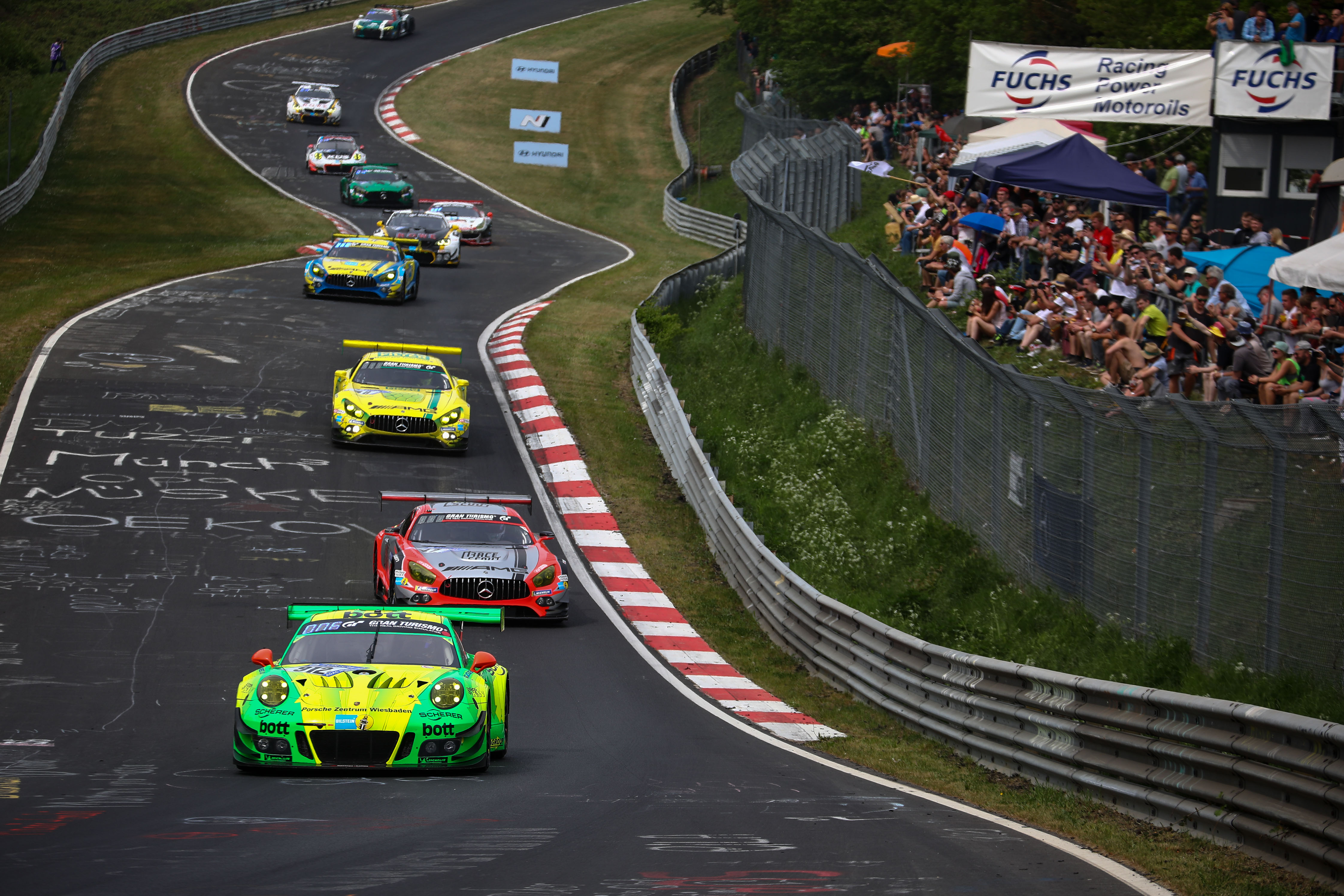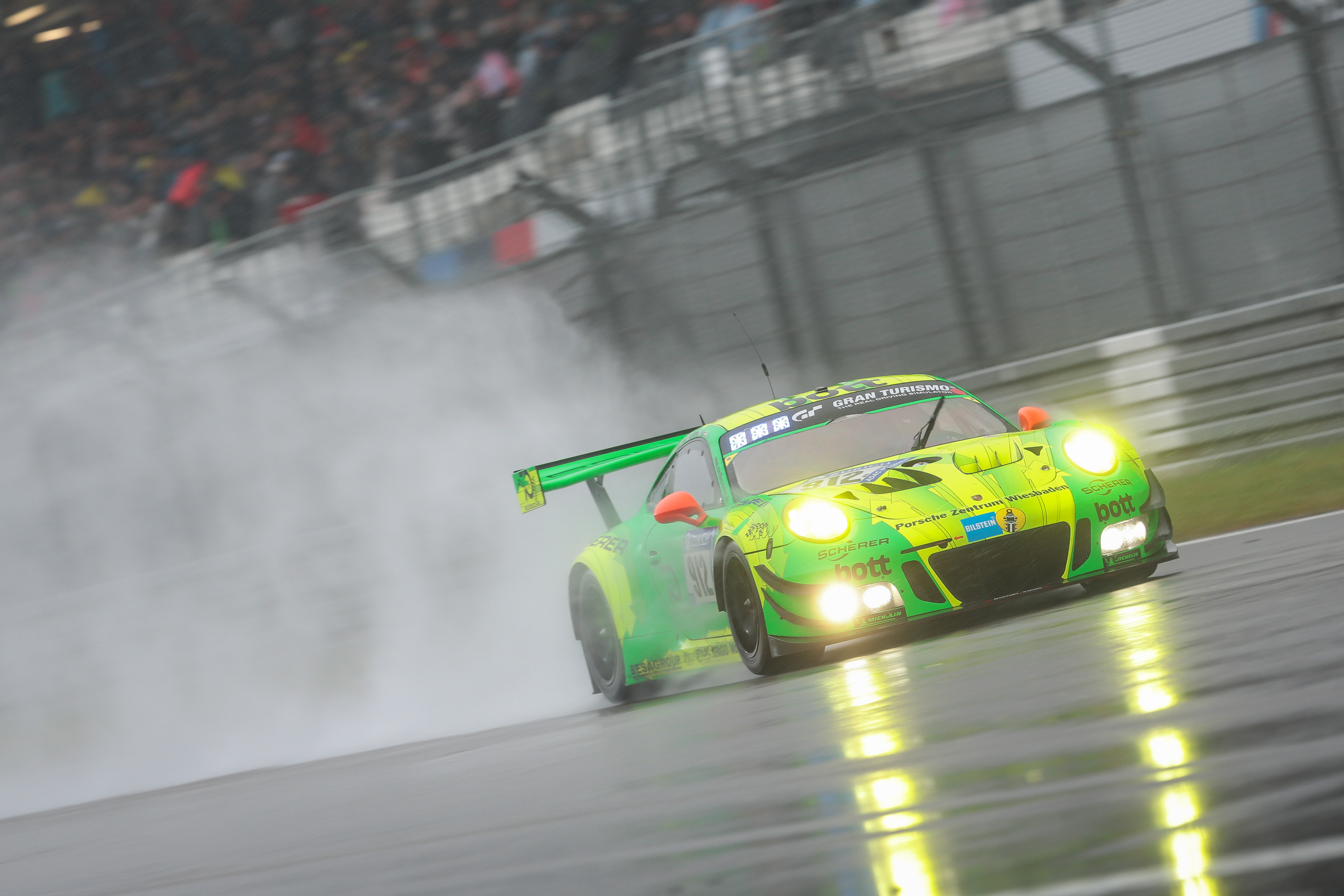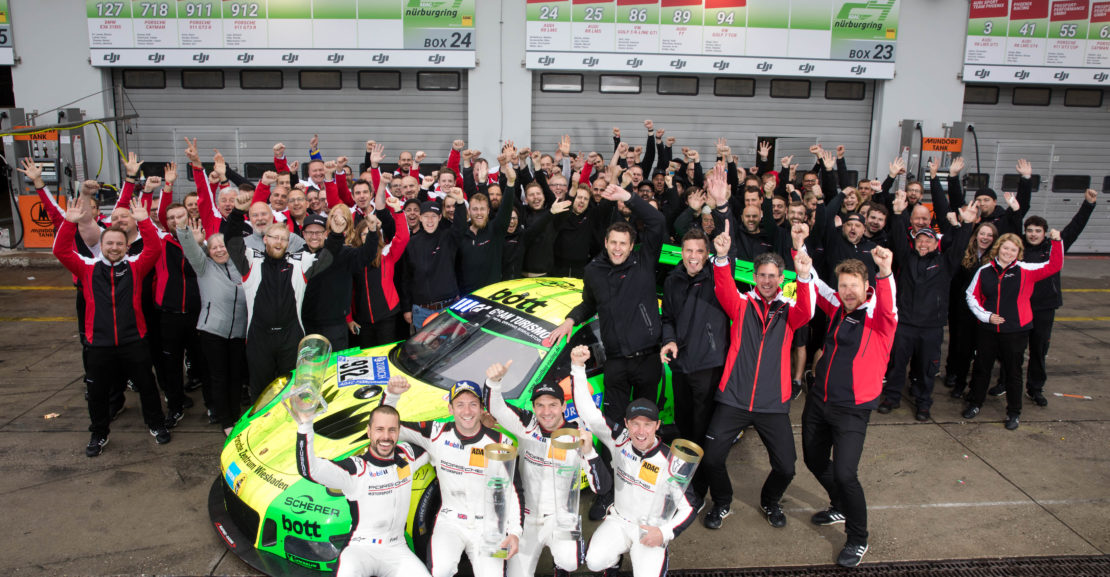The Manthey Porsche Team scored its sixth Nurburgring 24 Hours victory in a nail-biting climax to a weather-affected race that had to be halted in the latter stages.
Their main weapon—the Porsche 911 GT3 R!
The driver line-up of Richard Lietz, Patrick Pilet, Frédéric Makowiecki and Nick Tandy caught up to the front runners and moved into second place despite a time penalty.

When the race was restarted on Sunday after fog halted the race at 13.45 hours, the final driver Frédéric Makowiecki took the lead with a masterful overtaking maneuver and crossed the finish line in first place after 135 laps.
Powering the new 911 GT3 R is a cutting-edge 4-liter flat-six unit which is largely identical to the high-performance production engine of the road-legal 911 GT3 RS. Direct fuel injection, which operates at pressures up to 200 bar, as well as variable valve timing adjustments of the intake and exhaust camshafts ensure a particularly efficient use of fuel.

Moreover, compared to its predecessor, the normally-aspirated engine offers significantly better driveability and a broader usable rev range. The engine response is more precise due to six throttle butterflies. Power from the rear engine is transferred to the 310-mm-wide rear wheels via a Porsche sequential six-speed constant-mesh gearbox with an electronic shift actuator for particularly fast and precise gear changes.
The brake system of the 911 GT3 R also underwent further modifications and now offers increased stiffness and more precise control of the ABS. At the front axle, six-piston aluminium monobloc racing brake calipers combined with ventilated and grooved steel brake discs with a diameter of 390 millimeters ensure outstanding braking performances. Fitted at the rear axle are four-piston calipers and discs measuring 370 millimeters.
The cockpit has been redesigned. All controls have been perfectly aligned to suit the needs of the driver. For the first time the 911 GT3 R features air-conditioning. This ensures ideal interior cooling and, thanks to the direct connection to the seat and driver’s helmet, enables particularly efficient cooling of the driver, which in turn helps them maintain concentration and a constant performance over the race.

